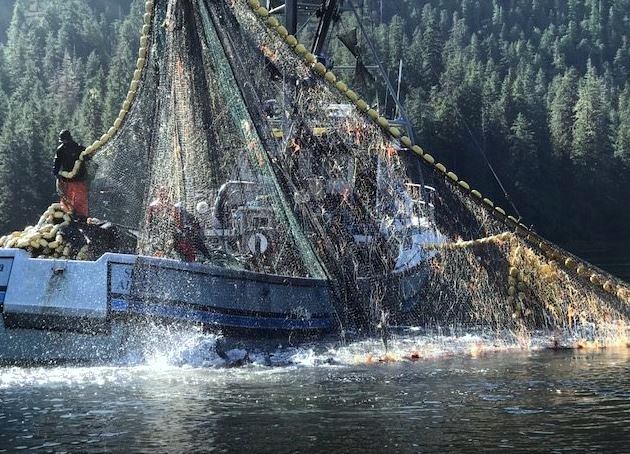
After a challenging year in 2020, chum salmon returned to the top of the list of Southeast Alaska’s most valuable hatchery-produced fish in 2021.
Coho, or silver salmon, were a distant second.
Hatchery chum salmon are so valuable to Southeast Alaska’s salmon fisheries, that they’re not even on the same chart as the four other species. Based on preliminary estimates, chum were worth about $25 million to the commercial fisheries in 2021, out of a total $31 million for all hatchery-produced species.
Flip Pryor is the Aquaculture Section Chief for the Alaska Department of Fish & Game. He led the department’s twice-yearly “Regional Planning Team” meeting in Sitka in the first week in April. The rebound in 2021 is in part a function of the market during the lockdown in 2020, but there are other factors that are less well understood.
See data from the April, 2022, RPT meeting in Sitka.
Trollers, for example, landed nearly $5 million worth of chum in 2021, their second-best year, even though the hatchery chum return has been generally larger over the past decade. Chum – compared to kings and coho – don’t always strike troll gear with much enthusiasm. But sometimes they do.
“This was one of the years the fish were really biting — the chum were biting when they were coming in,” Pryor said. “And that’s not always the case. There’s some years they simply don’t bite. They come in deep and they you know, they just aren’t hitting hooks, basically. And so the trollers don’t do so well. And this year (2021), they did really well.”

There are a few theories about the “will they or won’t they” behavior of chum – but no research. Pryor says a best guess is food availability at sea, as chum return to spawn, and whether the fish are satiated or hungry when they’re intercepted by trollers. It could be that simple.
What’s not especially simple is managing around it. A large forecast for hatchery chum in any given year can raise the troll fleet’s hopes, but it doesn’t always pan out.
“It also is kind of a management thing,” said Pryor. ” You look at CPUE (Catch Per Unit Effort) and all these boats, and try to figure out what they’re catching. And one year it’s way up and the next year it’s way down. How do you manage that? And it’s just something that you’ve got to do in-season, and it’s just one of those weird things you have to deal with.”
As good as 2021 was for chum, it was still below all the pre-pandemic years as far back as 2010, and it was less than half the record years of 2018 and 2012, when hatchery chum were worth almost $63 million. Seiners and gillnetters catch most of those fish – and get proportionately more value for them. (In 2021, Seiners landed roughly $12 million in chum, to $8 million for gillnetters, to $5 million for trollers.)
Trollers, however, do get considerably more value for kings and coho than the net fleets. After chum, coho were the second-most valuable hatchery salmon in Southeast in 2021, worth about $4 million, with trollers taking almost 90-percent of that value. Hatchery kings came in at around $800,000 for trollers, and far less for seiners and gillnetters.






























